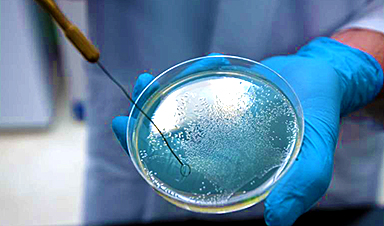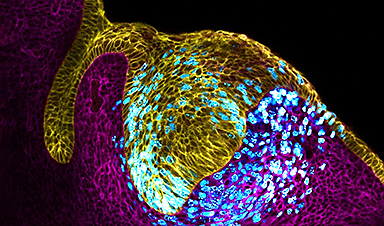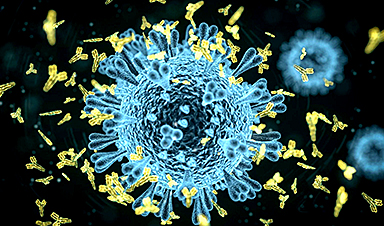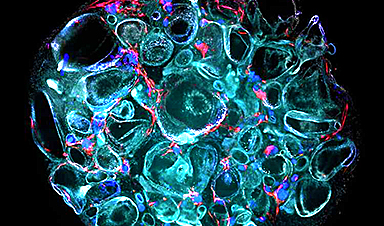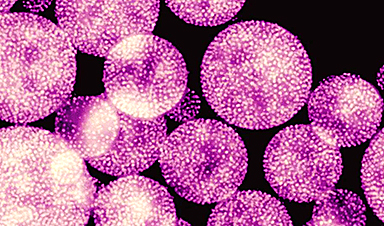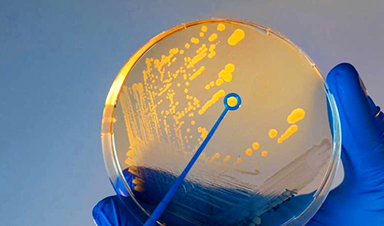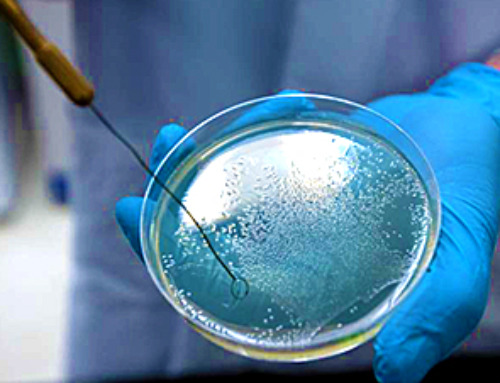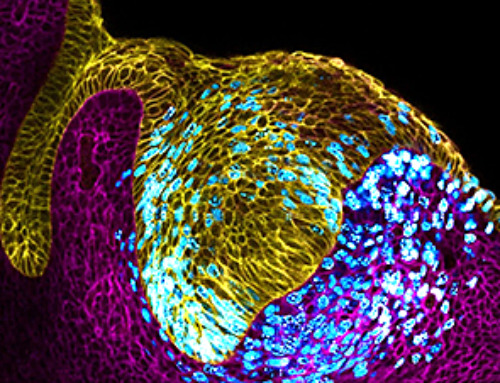There is no proof that spike proteins created in response to mRNA vaccines are harmful to the body, scientists have told Reuters.
The claim was made by immunologist Byram Bridle (here) in an interview on May 28 (here) with Canadian broadcaster Alex Pierson (here and here).
Bridle asked listeners to brace themselves for “scary” findings that he assured were “completely backed up by peer-reviewed scientific publications”. He said: “We made a big mistake… we thought the spike protein was a great target antigen, (but) we never knew the spike protein itself was a toxin and a pathogenic protein.”
He speculated that COVID-19 shots could lead to cardiovascular problems and infertility, because “by vaccinating people we are inadvertently inoculating them with a toxin” (timestamp 8.27).
The claim was repeated online (here , here , here), notably in an article by the Hal Turner radio show (here), a radio programme broadcast by the namesake’s far-right political commentator.
Reuters presented the statement to experts at the Meedan Digital Health Lab (meedan.com/digital-health-lab), who responded: “So far, there is no scientific evidence available that suggests spike proteins created in our bodies from the COVID-19 vaccines are toxic or damaging our organs.” (here)
Research shows that spike proteins (here) remain stuck to the cell surface around the injection site and do not travel to other parts of the body via the bloodstream, they added. The 1% of the vaccine that does reach the bloodstream is destroyed by liver enzymes.
Bridle said his findings were corroborated by “cutting-edge science” from Japan’s Pharmaceuticals and Medical Devices Agency (PMDA) (www.pmda.go.jp/0017.html), which he allegedly obtained through a freedom of information request (timestamp 4.41).
Turner’s website repeated the claim and linked this Japanese document as Bridle’s source (here). The article provided no further context, but research conducted by Reuters showed that the chapter was taken from this document (here), which featured the words ‘PFIZER CONFIDENTIAL’ in the footer.
When Reuters presented the document to Pfizer, however, a spokesperson wrote in an email that the file is a Common Technical Document (CTD) unrelated to Bridle’s claim.
Pharmaceutical companies are required to submit CTDs to regulatory authorities in the European Economic Area, Japan and the United States before medicines or vaccines can be approved (here). Pfizer submitted this CTD to be assessed by the PMDA before the shot was certified in February 2021 (here).
“We can confirm the document does not make any reference to spike proteins from the vaccine resulting in dangerous toxins that linger in the body – this claim is incorrect”, the spokesperson said….
News
New Research Reveals That Your Sense of Smell May Be Smarter Than You Think
A new study published in the Journal of Neuroscience indicates that the sense of smell is significantly influenced by cues from other senses, whereas the senses of sight and hearing are much less affected. A popular [...]
Deadly bacteria show thirst for human blood: the phenomenon of bacterial vampirism
Some of the world's deadliest bacteria seek out and feed on human blood, a newly-discovered phenomenon researchers are calling "bacterial vampirism." A team led by Washington State University researchers has found the bacteria are [...]
Organ Architects: The Remarkable Cells Shaping Our Development
Finding your way through the winding streets of certain cities can be a real challenge without a map. To orient ourselves, we rely on a variety of information, including digital maps on our phones, [...]
Novel hydrogel removes microplastics from water
Microplastics pose a great threat to human health. These tiny plastic debris can enter our bodies through the water we drink and increase the risk of illnesses. They are also an environmental hazard; found [...]
Researchers Discover New Origin of Deep Brain Waves
Understanding hippocampal activity could improve sleep and cognition therapies. Researchers from the University of California, Irvine’s biomedical engineering department have discovered a new origin for two essential brain waves—slow waves and sleep spindles—that are critical for [...]
The Lifelong Cost of Surviving COVID: Scientists Uncover Long-Term Effects
Many of the individuals released to long-term acute care facilities suffered from conditions that lasted for over a year. Researchers at UC San Francisco studied COVID-19 patients in the United States who survived some of the longest and [...]
Previously Unknown Rogue Immune Key to Chronic Viral Infections Discovered
Scientists discovered a previously unidentified rogue immune cell linked to poor antibody responses in chronic viral infections. Australian researchers have discovered a previously unknown rogue immune cell that can cause poor antibody responses in [...]
Nature’s Betrayal: Unmasking Lead Lurking in Herbal Medicine
A case of lead poisoning due to Ayurvedic medicine use demonstrates the importance of patient history in diagnosis and the need for public health collaboration to prevent similar risks. An article in CMAJ (Canadian Medical Association [...]
Frozen in Time: How a DNA Anomaly Misled Scientists for Centuries
An enormous meteor spelled doom for most dinosaurs 65 million years ago. But not all. In the aftermath of the extinction event, birds — technically dinosaurs themselves — flourished. Scientists have spent centuries trying [...]
‘Mini kidneys’ reveal new insights into metabolic defects in polycystic kidney disease
Scientists at Nanyang Technological University, Singapore (NTU Singapore) have successfully grown 'mini kidneys' in the lab and grafted them into live mice, revealing new insights into the metabolic defects and a potential therapy for [...]
Decoding the Origin of Life: Scientists Solve Early Earth RNA Puzzle
Recent research illustrates how RNA molecules’ chemical characteristics might have played a crucial role in the development of complex life forms. How did complex life manage to evolve on the early, inhospitable Earth? Initially, [...]
Improving infectious disease testing with gold nanoparticles
By harnessing the power of composite polymer particles adorned with gold nanoparticles, a group of researchers have delivered a more accurate means of testing for infectious diseases. Details of their research was published in the [...]
New micromaterial releases nanoparticles that selectively destroy cancer cells
Researchers have developed micromaterials made up only of proteins, capable of delivering over an extended period of time nanoparticles that attack specific cancer cells and destroy them. The micromaterials mimic natural secretory granules found [...]
Alzheimer’s Breakthrough: Scientists Make Revolutionary Leap
Dementia is a major health issue worldwide in the 21st century, impacting over 50 million people globally. This figure is expected to soar to 152 million by 2050, as the global population ages. Alzheimer’s disease (AD) [...]
How small RNA molecules regulate viral infections of bacteria
Viruses need hosts. Whether it's measles, the flu or coronavirus, viral pathogens cannot multiply or infect other organisms without the assistance of their hosts' cellular infrastructure. However, humans are not the only ones affected [...]
Computer scientists discover gap in the latest security mechanisms used by some chips
Over the past few years, hardware manufacturers have developed technologies that ought to make it possible for companies and governmental organizations to process sensitive data securely using shared cloud computing resources. Known as confidential [...]


